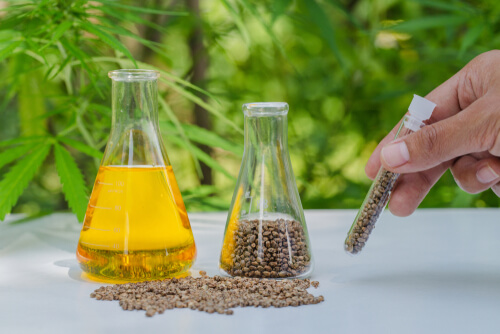
Cannabidiol (CBD) is a botanically derived ingredient that can be used in foods, beverages, health and wellness products, etc. So, it is important to maintain its quality by the standardization of key steps in its manufacturing process. Also, it is experiencing a surge in interest from people since the US Farm Act of 2018 legalized the industrial cultivation of the hemp plant. Keep in mind that the manufacturing of botanical extracts can be challenging because of various inherent variations. In this article, we will explore best practices for testing CBD.
The Cannabis Plant
Legally available CBD products are extracted from the hemp plant, which belongs to the cannabis family of plants. If the THC content is higher than 0.3%, then it is called marijuana, but if it is less than 0.3% it is classified as hemp or Cannabis Sativa. Apart from CBD and THC, other phytocannabinoids like terpenes and flavonoids are also naturally found in the plant.
Terpenes are aromatic compounds, and there are different types of them. Their combinations give different hemp plant strains their unique aroma. Apart from the aroma, they also have therapeutic effects. Some of the terpenes found in the hemp plant are the following: D-limonene, alpha- and beta-pinene, beta-myrcene, terpinolene, linalool, and beta-caryophyllene.
Best Practices For CBD Hemp Plant Extracts
Documentation
The US Hemp authority requires manufacturers to maintain an electronic or hard copy of records for a minimum of five years. So, you must maintain a paper trail of sourcing details, analysis, manufacturing, etc., of hemp-derived ingredients or products. The other records that must be maintained are the variety of hemp plants, the provenance of the hemp seeds, planting and harvesting records, processing records, and results of the analysis. Above all, cannabidiol product manufacturers must follow current good manufacturing practices (cGMPs).
Characterization
The phytocannabinoid profile of hemp plant extracts is complex. Because of this, it is important to evaluate the typical levels of cannabinoids present in the plant parts used for preparing the extracts. For example, proximate testing can provide you with details like protein, fiber, moisture, and ash content in the source material.
By identification testing, you can ensure that you are using the correct variety of Cannabis Sativa for producing CBD hemp plant extract. For example, thin-layer chromatography (TLC) is used for determining the chemotype, i.e. cannabis vs hemp. It will also help to identify whether the hemp plant strain is free from botanical adulterants like Acer palmatum, Hibiscus cannabinus, Datisca cannabina, etc.
These are some of the methods by which the quality of CBD hemp plant extract can be evaluated, and we hope that thes details shared above were useful for you.

